Which Dynasties are Best Known for Constructing the Great Wall of China?
The Great Wall of China is one of the longest and most extensive ancient defence projects in the world. The history of the construction of this great ancient Chinese architecture spans several dynasties. Almost every dynasty built upon and expanded it. So do you know which dynasty constructed the Great Wall of China, which dynasties are best known for constructing it?
Which Dynasty Constructed the Great Wall of China
The Great Wall was built over 10 dynasties, including the Spring and Autumn Period, the Warring States Period, the Qin Dynasty, the Han Dynasty, the Northern Wei Dynasty, the Eastern Wei Dynasty, the Northern Qi Dynasty, the Northern Zhou Dynasty, the Sui Dynasty, the Tang Dynasty, the Liao Dynasty, the Jin Dynasty and the Ming Dynasty, lasting nearly 2,000 years.
During the Spring and Autumn Period and the Warring States Period, the Great Wall entered its first climax as the powers competed for supremacy and defended each other, but the length of the wall was relatively short at this time. After the Qin Dynasty destroyed the six kingdoms and unified the country, Emperor Qin Shi Huang connected and repaired the Great Wall of the Warring States. And the Ming Dynasty was the last dynasty to construct and overhaul the Great Wall.
Due to its age, most of the Great Wall of the early dynasties is incomplete. Only the one the Ming Dynasty Great Wall has been preserved intact. Therefore, people generally refer to the Great Wall of Ming Dynasty the Great Wall of China. And the length of the Great Wall is also the length of the Great Wall of Ming Dynasty.
The Great Wall of Qi in the Spring and Autumn & the Warring States Periods (770-221 BC)
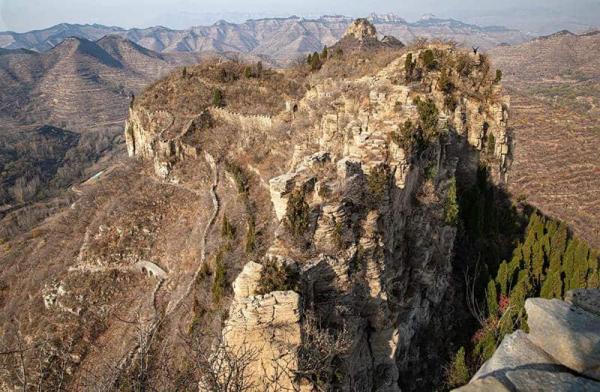
The Great Wall of Qi was built during the Spring and Autumn Period and completed during the Warring States Period, taking more than 170 years. It is the earliest surviving ancient Great Wall in China with accurate remains and in good condition, and is known as the "Father of the Great Wall". >> Explore How Old is the Great Wall of China?
During the Spring and Autumn and Warring States period, China entered a period of great historical change from division to unification, with the gradual decline of slavery and the rise of feudalism. Vassal States underwent varying degrees of change according to their state conditions, leading to political stability and economic prosperity, as well as military power, resulting in large-scale annexation wars that lasted several hundred years. In less than three centuries, there were more than 480 wars of various scales. The constant wars between the various vassal states made it urgent to strengthen the fortifications, and the construction of the Great Wall was a common method used by all vassal states at the time.
Qi (1046-221 BC) was a vassal state in Chinese history from the Western Zhou to the Spring and Autumn Warring States period, and the first one to construct the Great Wall of China.
The Great Wall of Qi is one of the most protected remains of the Great Wall built during this period. It was approximately 500km long and built in the mountains and valleys of the rolling Taiyi Mountain Range in Shandong Province, starting from Pingyin County in the west, passing through Feicheng City, Jinan City, Boshan District of Zibo City, Linqu County, Yishui County, Anqiu City, Ju County, Wulian County and entering the sea in the West Coast New Area of Qingdao City.
The Great Wall of Qi make the the Spring and Autumn and Warring States period one of the dynasties in Chinese history best know for constructing the Great Wall.
The Great Wall in the Qin Dynasty (221-207 BC)
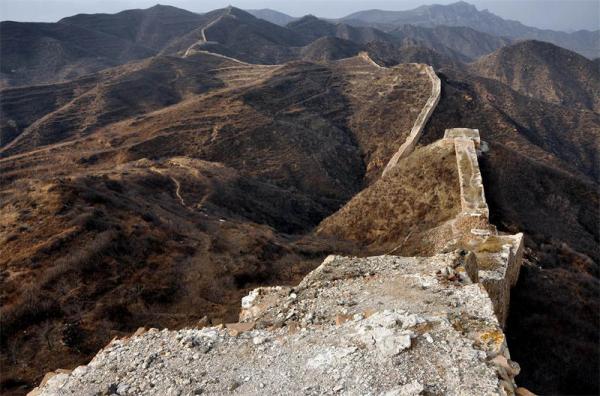
Qin Dynasty is generally acknowledged as one of the Chinese dynasties best know for constructing the Great Wall of China.
Emperor Qin Shi Huang thirty-three years (214 BC), he sent general Meng Tian to fight against Huns in the north, and construct the Great Wall from Lintao (now Minxian County, Gansu) in the west to Liaodong in the east, known as the Qin Great Wall.
In the territory of the Guyuan area, the actual Qin Great Wall was repaired on the basis of that in the Warring States, and runs from east to west across Xiji, Guyuan and Panyang counties. The Qin Great Wall connected the Great Wall of the three vassal states of Qin, Zhao and Yan in the past, stretching for 10,000 miles from Lintao to Liaodong, hence the name "Great Wall of 10,000 miles".
The Qin Great Wall could be roughly divided into the western and northern sections. The western section starts in Min County, Gansu Province, followed the Taohe River north to Lintao County, then northeast through Dingxi County to Guyuan County in Ningxia, Huan County in Gansu, Jingbian, Hengshan, Yulin and Shenmu in Shaanxi, and later turned north to Tokoto South in Inner Mongolia, reaching the southern bank of the Yellow River.
The northern section, the Great Wall north of the Yellow River, run along the Wolf Mountain in the western part of the Yin Mountains, eastwards to the northern foot of the Daqing Mountains, then eastwards through present-day Jining and Xinghe in Inner Mongolia to Shangyi in Hebei, then north-eastwards through present-day Zhangbei and Weichang in Hebei, later eastwards through Fushun and Benxi and finally south-eastwards to where the Chongchon River enters the sea in Korea.
The present-day site of the Qin Great Wall has a cumulative length of around 120 kilometres in Baotou, Inner Mongolia. Most of the earthen walls have been destroyed. However, from the heights, the Great Wall can still be seen going up and down the mountains in the shape of a wandering dragon. The remains of ancient beacons and barricades can still be identified in every other section. According to the archaeological studies, eight or nine ancient cities remain inside and outside this section of the Great Wall of Qin, which may have been the camp pads of the Qin army, or the cottages of the cultivated people. From the beacons and barricades of this section of the Wall, pottery shards from the Warring States, Qin and early Western Han dynasties can often be found.
>> Popular Private Great Wall of China tours
2 Days Beijing Tour with Great Wall
Half Day Great Wall of China Tour to Mutianyu
3 Days Great Wall Trekking with Camping Tour
The Great Wall in the Han Dynasty (202BC-220AD)
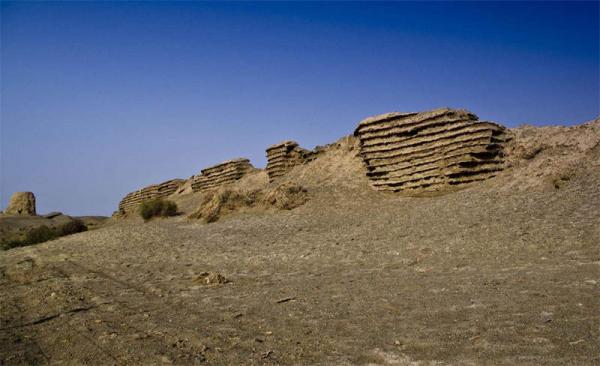
Han Dynasty is another dynasty famous for building the Great Wall of China.
After his accession to the throne, Emperor Wu of Han Dynasty launched several successive wars against the Huns, expelling them to the north of the desert, repairing the Great Wall of Qin built by Meng Tian, and building the Outer Great Wall, creating a Great Wall nearly 10,000 kilometres long, from the city of Dawan II in the west to the north bank of the Yalu River in the east. It was at this point that the Great Wall of Qin, Zhao and Yan of the Warring States period was abandoned, and its military defensive role came to an end.
The construction of the Great Wall by Emperor Wu of the Han Dynasty had extraordinary historical significance in maintaining the security of the Western Han Empire, as well as maintaining the working and security of the ancient Silk Road.
The site of the Han Great Wall is located in Jiuquan, Gansu, on the Ullat Grassland, with a relative vertical spacing of 10-80 km. The Han Great Wall differs from the Qin Great Wall in the way it was constructed. The Qin Great Wall was built on the basis of dangerous cliffs and gullies and was almost entirely made of stone. The Han Great Wall, on the other hand, was built in the grasslands, where there was generally no danger and not stone available, so the wall was made of rammed earth. After more than two thousand years of weathering, the height of the site is mostly around 0.5 to 1 metre, and the width is about 4 to 8 metres, and many sections are used as roads today.
The Great Wall in the Two Jin Dynasties and the North and South Dynasties (265-589)
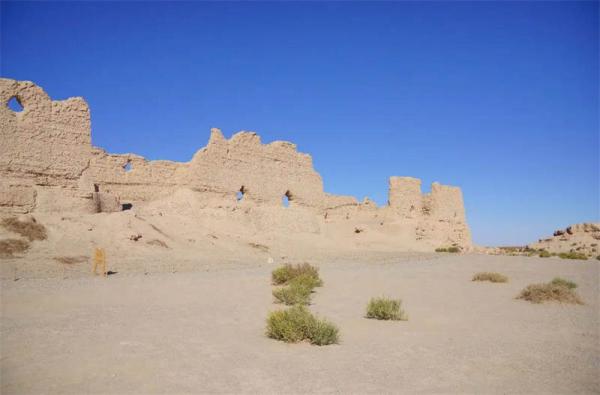
China has been a multi-ethnic country since ancient times, and in addition to the Han Chinese, there were many ethnic minority dynasties that ruled China during the long feudal period. These minority rulers, in order to prevent harassment by other minority groups, also constantly built the Great Wall of China.
The Great Wall of China built in Western Jin - In 265 AD, Sima Yan became emperor in place of Wei, and in 280 AD he destroyed the Eastern Wu, ending the separation of the three kingdoms and unifying China. The Great Wall was built to defend the country from the nomadic slave masters in the north.
The Great Wall of Northern Wei - The Northern Wei Dynasty ruled a large area in the northern part of the Yellow River Basin. Ruled by the Xianbei Tuoba tribe, the Northern Wei dynasty originally lived as nomadic herders and mounted archers, but after ruling the predominantly agricultural Central Plains, the state became momentarily powerful. To defense the nomadic Zoran in the north and the Khitan in the northeast, the Northern Wei constructed the Great Wall.
The Great Wall of Northern Qi - In 550 A.D. Gao Yang destroyed the Eastern Wei and founded the Northern Qi, which controlled the present-day areas of Hebei, Henan, Shanxi and Shandong. The Great Wall was built to defend the nomads such as the Turks, the Zorans and the Khitan in the north and the Northern Zhou in the west.
>> Related reading: Who Built the Great Wall of China?
The Great Wall in Ming Dynasty (1368 - 1644)
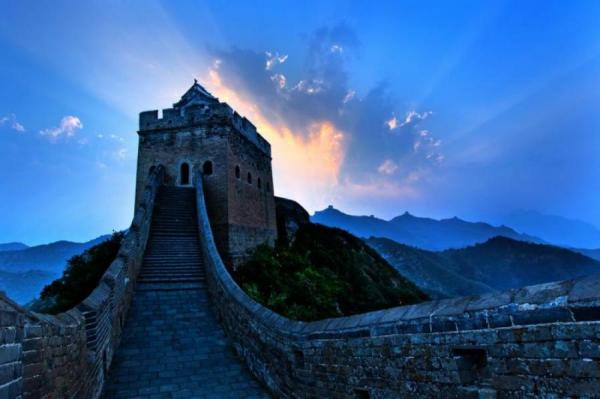
The existing Great wall that are best protected were mainly built in Ming Dynasty, such as Badaling Great Wall, Mutianyu Great Wall, Huangyaguan Great Wall, Simatai Great Wall, Jinshanling Great Wall, etc. Therefore, Ming Dynasty is best known for constructing the Great Wall of China today.
The Ming Great Wall starts from Yalu River (Shanhai Pass) in the east and ends at Jiayuguan Pass in the west. The Ming Great Wall is made of similar materials as the Qin Great Wall, and is different from the Han Great Wall and the Sui Great Wall.
The Great Wall construction in the early Ming Dynasty was mainly based on the Great Wall of Northern Wei, Northern Qi and Sui Dynasty. More piers, beacons, garrisons, trenches were built, and parts of the earth walls were built into stone walls. The key projects were the outer Great Wall from northwest Beijing to Datong, Shanxi Province, and the border passes from Shanhaiguan to Juyongguan.
When it came to the mid-Ming Dynasty, after the "Tumu's Change", Walla, Tartar constantly raised troops to commit crimes and plunder in the border, forcing the Ming Dynasty to build the Great Wall in the north as a matter of urgency.
The Ming Great Wall was the most time-consuming, the largest, and the most well-developed defense system and structure in Chinese history.